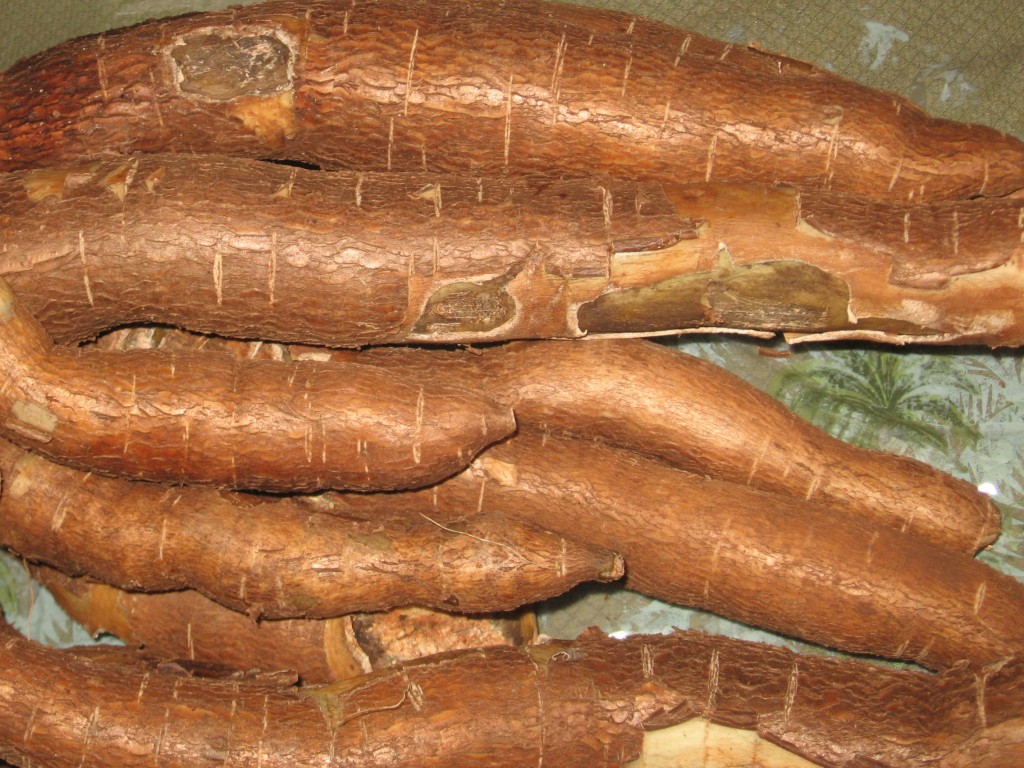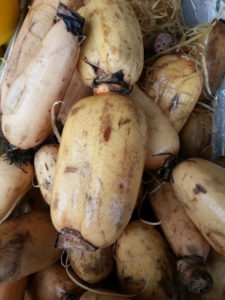Cassava/Kamoteng Kahoy
 Cassava -Manihot Esculenta – is also called manioc, tapioca or Brazilian arrowroot. The Spanish call it “yucca”. We call it “kamoteng kahoy” in the Philippines. It literally means sweet potato from a tree since cassava grows as a woody shrub and the cassava forms as roots of the plant unlike the sweet potato that grows in a vine.
Cassava -Manihot Esculenta – is also called manioc, tapioca or Brazilian arrowroot. The Spanish call it “yucca”. We call it “kamoteng kahoy” in the Philippines. It literally means sweet potato from a tree since cassava grows as a woody shrub and the cassava forms as roots of the plant unlike the sweet potato that grows in a vine.
Cassava is practically easy to grow. You just need a lot of space if you want to gather a substantial harvest. All you need is a cutting from a plant put it in the soil and water. In a few weeks it will take off and don’t need much attention except regular watering and maybe put compost around the base of the plant. The cassava roots will become swollen and in 8-10 months it will be ready for harvesting. It is also drought tolerant and that is why it is grown worldwide where there is not much water like in Africa. in fact it is the main product of Nigeria.
Cassava I think should be grown everywhere to help in the fight against hunger in the world. It is one of the largest source of food carbohydrates besides rice and corn or potatoes. It also contains more protein than its counterparts like yam, taro and potato. It is also free from gluten which is good for people with celiac disease. It also contains valuable B-complex vitamins and a source of important minerals like magnesium, zinc, copper, potassium and manganese.
But you should never eat the cassava raw. It has to be processed well and cooked. Cassava root contains natural toxic that could be poisonous . There are cases of poisonings in the Philippines by eating cassava that was mishandled or not prepared properly.
The thing I remember when I was growing up is my Grandma will gather cassava from the backyard. I always get fascinated by the way she prepares it. The cassava comes out brown and dirty so she washes them thoroughly and then peel it in a spiral motion. As she peels, the white meat will be revealed which is the part we eat. She cuts them in smaller portions (because one cassava root could come more than a foot long). After that she steams it and that would be our snack for the day or breakfast even. We usually dip them in sugar and grated coconut and it would be so delicious. I miss my grandma and those days in the farm with her.
